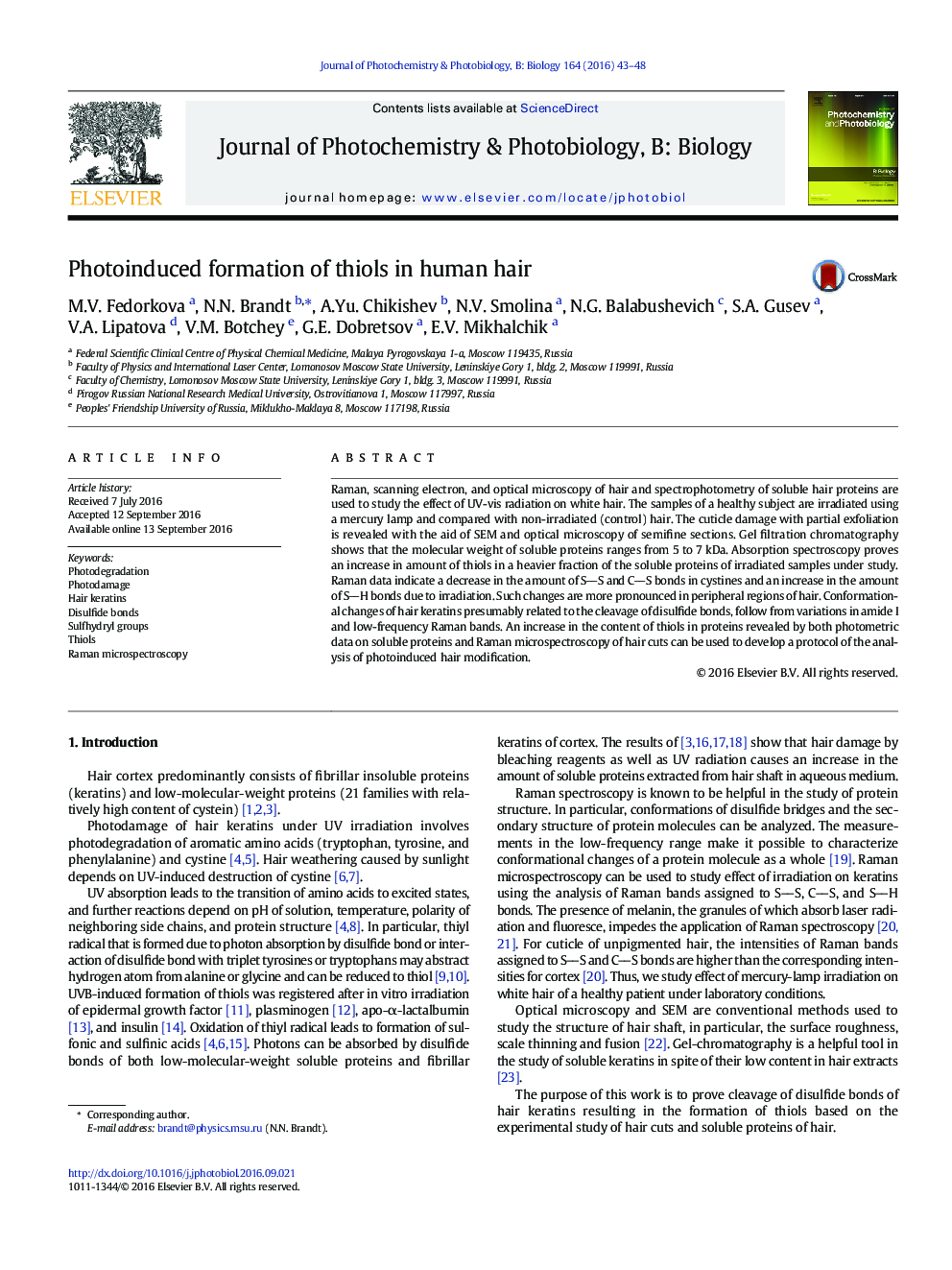| Article ID | Journal | Published Year | Pages | File Type |
|---|---|---|---|---|
| 4754600 | Journal of Photochemistry and Photobiology B: Biology | 2016 | 6 Pages |
â¢Photoinduced cuticle damage is revealed by SEM and optical microscopy.â¢Content of thiols in soluble proteins increases due to irradiation of hair samples.â¢Raman data show cleavage of SS and CS bonds in cystines and formation of SH bonds.â¢Raman data indicate conformational changes of hair keratins.
Raman, scanning electron, and optical microscopy of hair and spectrophotometry of soluble hair proteins are used to study the effect of UV-vis radiation on white hair. The samples of a healthy subject are irradiated using a mercury lamp and compared with non-irradiated (control) hair. The cuticle damage with partial exfoliation is revealed with the aid of SEM and optical microscopy of semifine sections. Gel filtration chromatography shows that the molecular weight of soluble proteins ranges from 5 to 7Â kDa. Absorption spectroscopy proves an increase in amount of thiols in a heavier fraction of the soluble proteins of irradiated samples under study. Raman data indicate a decrease in the amount of SS and CS bonds in cystines and an increase in the amount of SH bonds due to irradiation. Such changes are more pronounced in peripheral regions of hair. Conformational changes of hair keratins presumably related to the cleavage of disulfide bonds, follow from variations in amide I and low-frequency Raman bands. An increase in the content of thiols in proteins revealed by both photometric data on soluble proteins and Raman microspectroscopy of hair cuts can be used to develop a protocol of the analysis of photoinduced hair modification.
